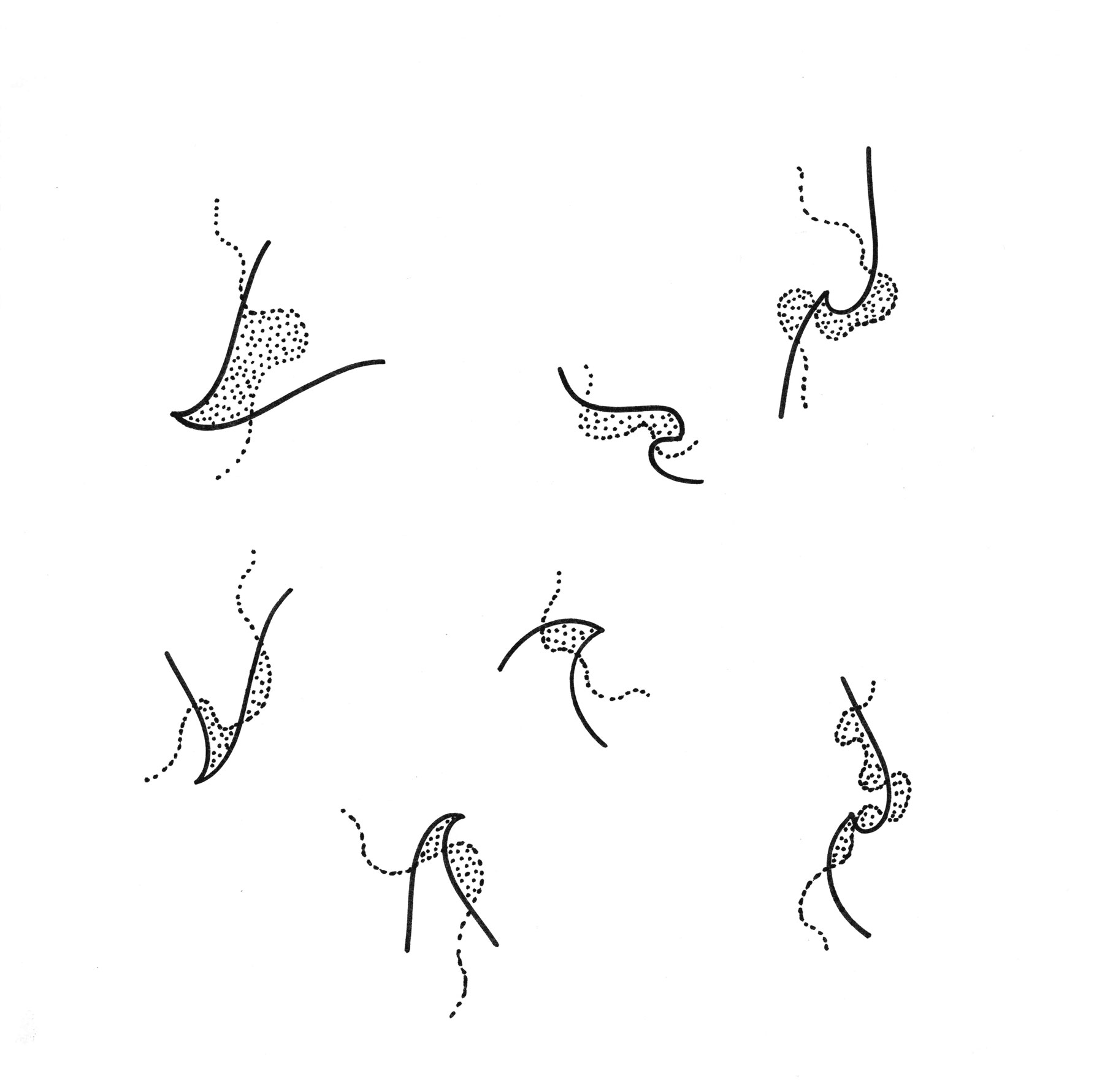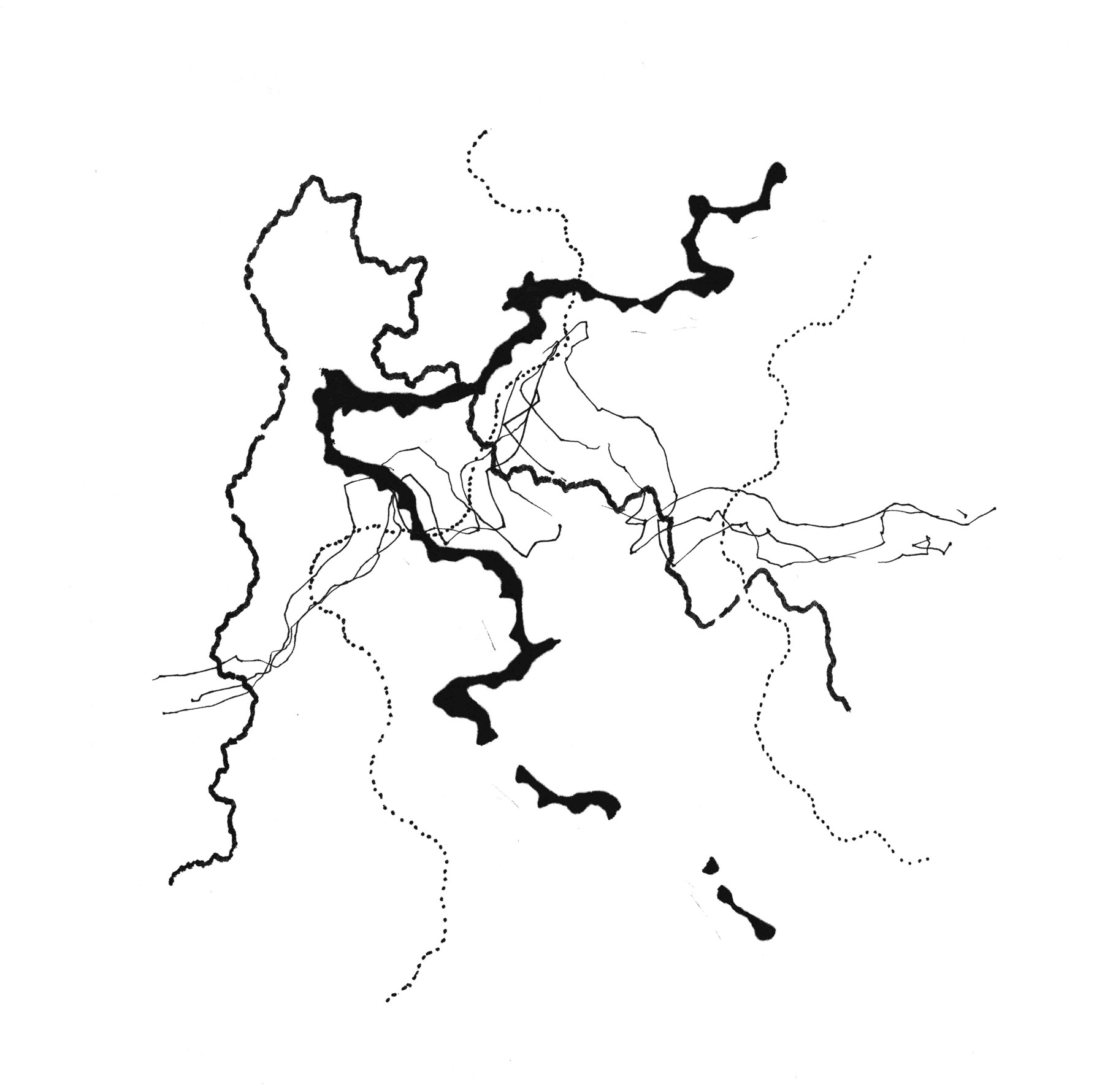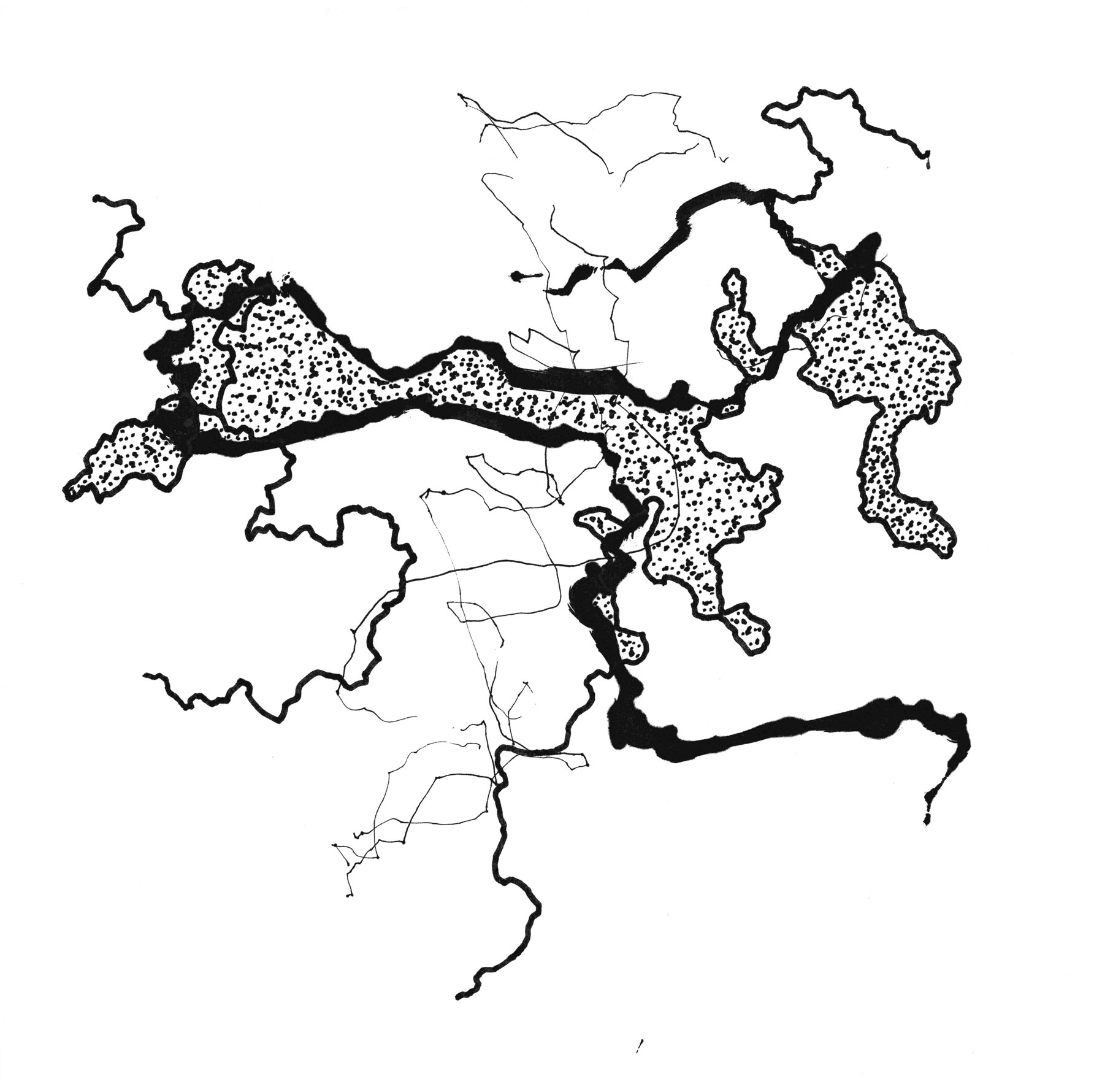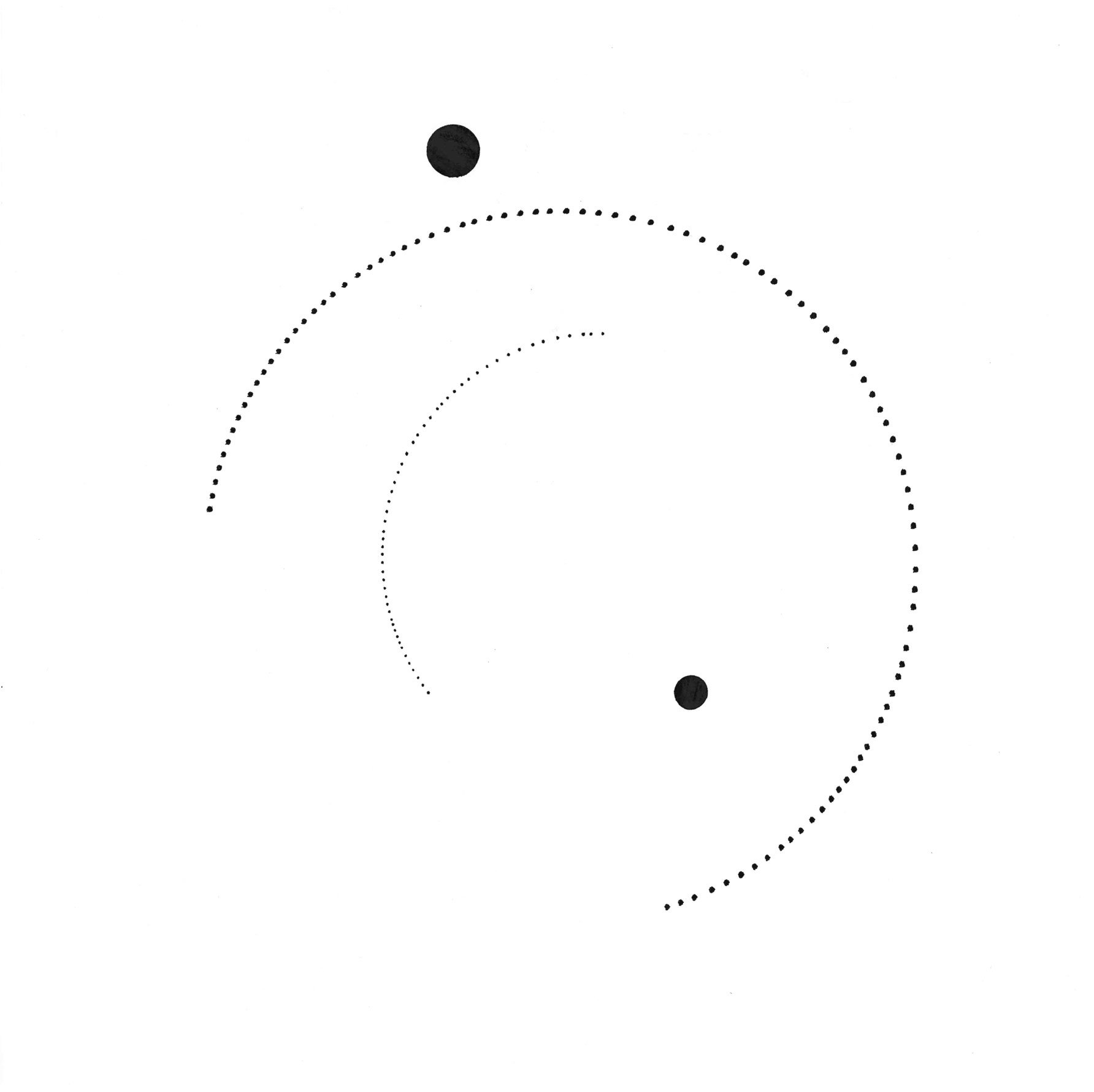"Everything starts with a dot"
(Wassily Kandinsky)
The essence of drawing is touch, executed and made visible on a surface with the help of a tool, and
whose character is revealed in the qualities of rhythm, pressure, suppleness and control.
The same qualities also come into play when making music, where touches are converted into
vibrations by means of a resonating body. Making music is drawing with sounds.
So if we want to translate a visual imagination into a sound imagination, or vice versa, we have to start
with the touch impulse. In concrete terms, reading a drawing as a score means imitating the touch of the
drawing pencil and transferring it to a musical instrument.
To prevent a reading habit that is oriented to the horizontal as the time axis, and the vertical as the axis
of coordination, I have chosen a square format here, which in principle can be rotated in any direction.
The distribution of points and lines on the surface corresponds to the chronology of the recording of the
touches, and consequently follows the principle of layering: it builds up not from left to right, but from
back to front.
In the perception of the viewer, or listener, the order is naturally the reverse: it leads from the surface
into the depths.
"Alles beginnt mit einem Punkt"
(Wassily Kandinsky)
Das Wesen der Zeichnung ist Berührung, die mit Hilfe eines Werkzeugs auf einer Oberfläche ausgeführt
und sichtbar gemacht wird, und deren Charakter in den Eigenschaften der Rhythmik, Druckstärke,
Geschmeidigkeit und Kontrolliertheit zum Vorschein kommt.
Die gleichen Eigenschaften kommen auch beim Musizieren zum Tragen, wo Berührungen mittels eines
Resonanzkörpers in Schwingungen konvertiert werden. Musizieren ist Zeichnen mit Klängen.
Wenn wir also eine visuelle Vorstellung in eine Klangvorstellung übersetzen wollen, oder umgekehrt,
müssen wir beim Berührungsimpuls ansetzen. Eine Zeichnung als Partitur zu lesen, heißt konkret, die
Berührung des Zeichenstiftes zu imitieren, und auf ein Musikinstrument zu übertragen.
Um einer Lesegewohnheit vorzubeugen, die sich an der Horizontalen als Zeitachse, und der Vertikalen
als Koordinationsachse orientiert, habe ich hier ein quadratisches Format gewählt, das prinzipiell in jede
Richtung gedreht werden kann. Die Verteilung der Punkte und Linien auf der Fläche entspricht der
Chronologie der Aufzeichnung der Berührungen, und folgt dementsprechend dem Prinzip der Schichtung:
sie baut sich nicht von links nach rechts auf, sondern von hinten nach vorne.
In der Wahrnehmung des Betrachters, oder Hörers, ist die Reihenfolge naturgemäß die umgekehrte: sie
führt von der Oberfläche aus in die Tiefe hinein.











































